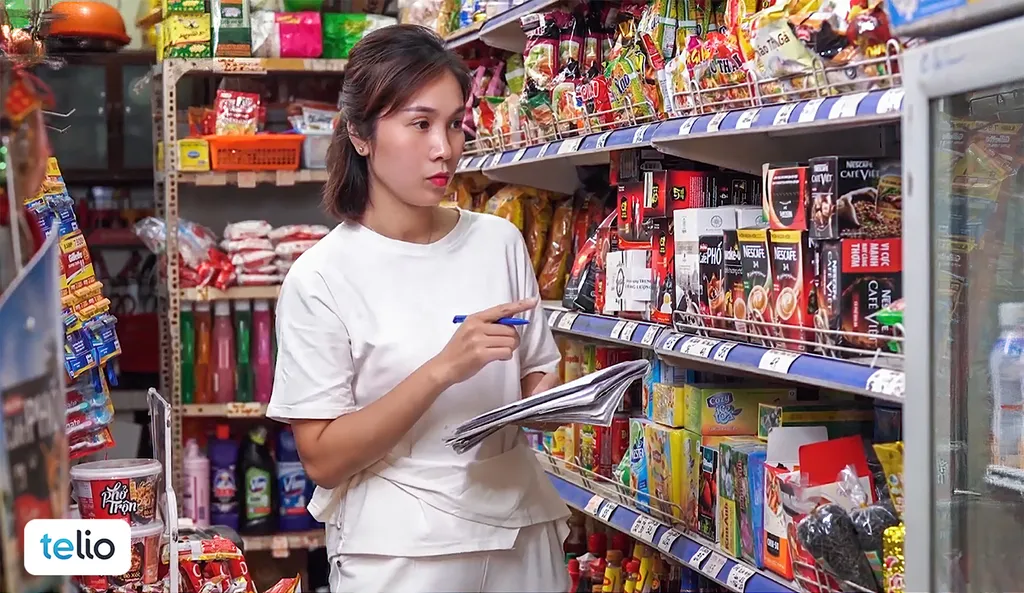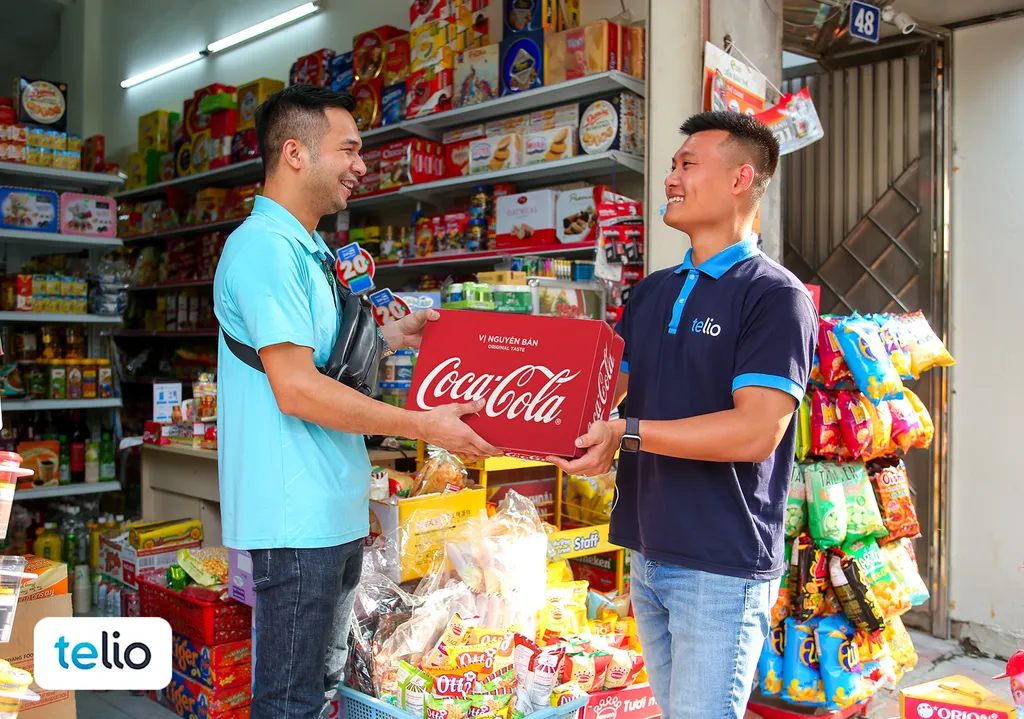 Brandinfo
Brandinfo

In the past, she had to ring her suppliers and wait until they stopped by to deliver the goods, or even fight her way through busy traffic to buy goods at a warehouse. Now, she just hunches over the laptop screen or mobile phone to order goods through an app.
“Whenever I need goods, I visit this app, pick the items I want, and they would be delivered to my store the next day,” she told Việt Nam News.
“Product prices are all listed. I even can buy a small number of products at a very competitive price, which is impossible if I order that quantity from a wholesaler,” she said.
Retail spending in Việt Nam totalled nearly US$170 billion in 2021, according to the country’s General Statistics Office. Most of it happens in stores like Thuỷ’s - informal street vendor setups, open market stalls and mom-and-pop stores.
 |
| Thuỷ Nguyễn is checking inventory before ordering on the app |
{ "id": "TYxV3VJrLv", "type": "myToolImages", "data": { "data": "" } }
{ "id": "7HXWiw4WhZ", "type": "myToolImages", "data": { "data": "" } }
These shops also account for over 60 per cent of fast-moving consumer goods (FMCG) sales in urban areas and over 90 per cent in rural Việt Nam, according to consulting firm Kantar Worldpanel Việt Nam.
The fragmented ecosystem of these ‘old fashioned’ and technophobic retail stores, together with the lack of tech-enabled solutions in the B2B (business to business) e-commerce marketplace, make it complex for suppliers and manufacturers to get their products to market.
A new crop of B2B e-commerce start-ups across the country are trying to tackle the problem, shaping radical transformations to the act of shopping by linking small shopkeepers with brands, merchandise suppliers through apps and other digital channels.
Shaping the future of shopping
Being one of the first movers in the B2B e-commerce market, four-year-old e-commerce platform Telio has seen startling developments in its network. It is connecting thoroughly 80,000 retailers with 50 brands and manufacturers across 25 cities and provinces in Việt Nam with 2 verticals: FMCG and Healthcare.
Telio has been partnering with major FMCG players in both the food and drink sectors. Beverage market leaders Coca-Cola (No. 1 in Cola drink), Tan Hiep Phat (representing Ready-to-drink tea), and TCP with top energy drink brands Redbull and Warrior have been working with Telio to extend coverage, drive volume, and develop strategic SKUs. Other brands Ajinomoto, Acecook, Miwon, and Mondelez also got on board to reinforce the supply of essential foods for their customers.
Besides, the company is in discussions to onboard other sizeable industry players including Sabeco, Habeco, HVN, and P&G, according to Telio CEO Bùi Sỹ Phong.
“Equipped with technology advancements, Telio’s B2B e-commerce model helps these brands and manufacturers sell goods directly to small retailers without having to manage relationships with intermediaries or solve the last-mile distribution on their own, thus diminishing selling costs, and optimising logistics for the brands,” Phong told Việt Nam News.
 |
| Telio links brands directly to retailers, helping them skip any intermediaries in between |
{ "id": "pWuCAp9JYt", "type": "myToolImages", "data": { "data": "" } }
{ "id": "lS9zKa7gTn", "type": "myToolImages", "data": { "data": "" } }
{ "id": "uVnGEblkWX", "type": "myToolImages", "data": { "data": "" } }
{ "id": "Gt3WdTbky8", "type": "myToolImages", "data": { "data": "" } }
{ "id": "-vw7mmRDos", "type": "myToolImages", "data": { "data": "" } }
The long-standing arch corporates have observed these inevitable digitalisation movements and started working on this trend to maximise value for their retailers. This can streamline their whole value chain efficiently by reaching millions of clients nationwide without resorting to multiple intermediary distributors, sub-distributors, wholesalers, semi-wholesalers, and traders.
Besides these obvious benefits, B2B online start-ups like Telio can play the role of marketing channels via raising awareness, preference, and purchase of their products on the Telio ecosystem. And moreover, trade promotions by corporates can be done instantaneously and in a highly visible way as planned out without risks of intermediaries doing over and under-promos.
Apart from Telio, many other B2B exchanges have also sprung up, especially in developing countries.
Unilever Vietnam, whose products range from Hellmann’s mayonnaise to Dove soap, has rolled out the OrderUNow mobile application for three years, helping more than 170,000 grocery stores and retailers across the country directly import goods from Unilever’s distributors.
The app helps Unilever digitise the extensive manual ordering and delivery process including settling physical paperwork, ensuring stock availability, and arranging orders and deliveries - either through back-and-forth emails or phone calls - which could be tedious and neverending.
Coca-Cola has also launched its B2B exchange Wabi2b in Nigeria, West Africa, and Viet Nam to convert the existing traditional trade channel into a cybernated platform.
“Wabi2b is a brainchild of the Coca-Cola Company but the benefits are not limited to Coca Cola. We aim to digitise route-to-market for all FMCG companies. Most importantly, we want to help our retail partners including the small shops on the streets who are selling FMCG products,” Country Manager, Wabi Nigeria Omolara Adagunodo told a local newspaper.
In Asia, Forrester is forecasting a growth of 12.1 per cent per annum in B2B e-commerce, with B2B online marketplaces being the prevalent business model, backed by factors such as government support as well as rising mobile penetration in the region.
As for Việt Nam, as part of the government’s plan for e-commerce development, around 55 per cent of the population are targeted to shop online with an average annual spending of US$600 by 2025.
The large landscape of the market has thrown open significant opportunities for industry biggies to cash in on the early days of the boom. A million-dollar effort to turn unassuming grocery shops into mini–tech hubs has just begun.